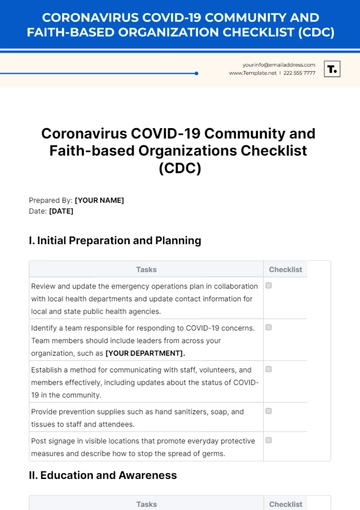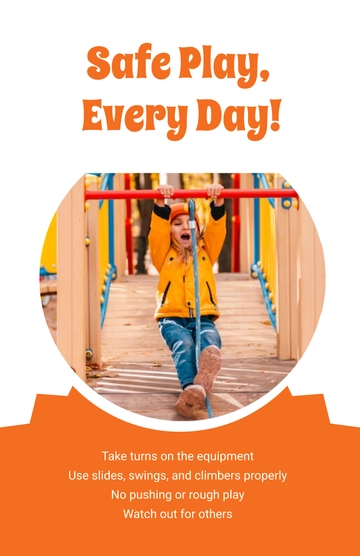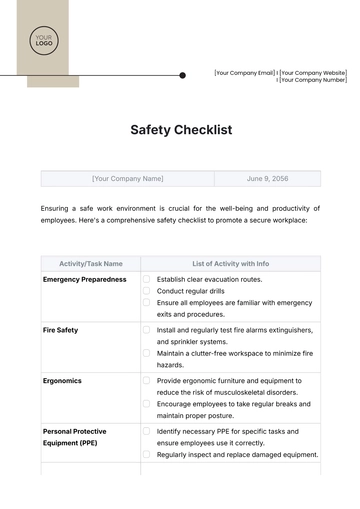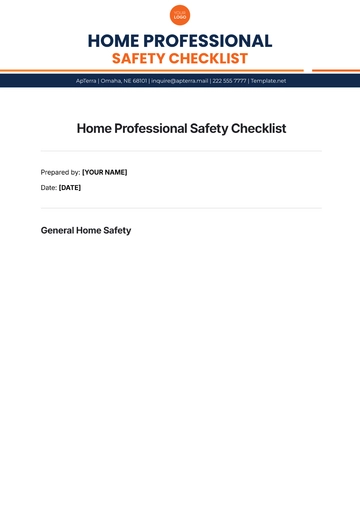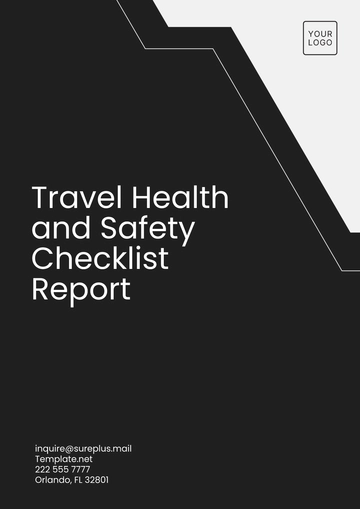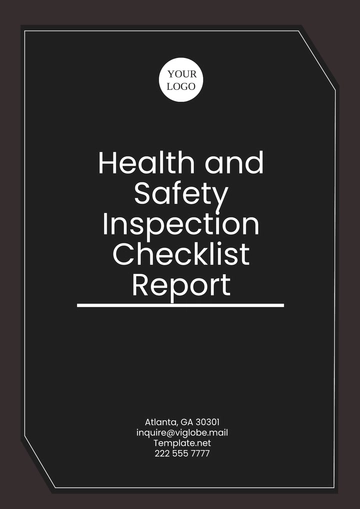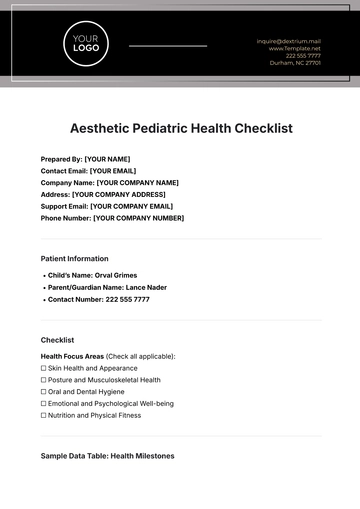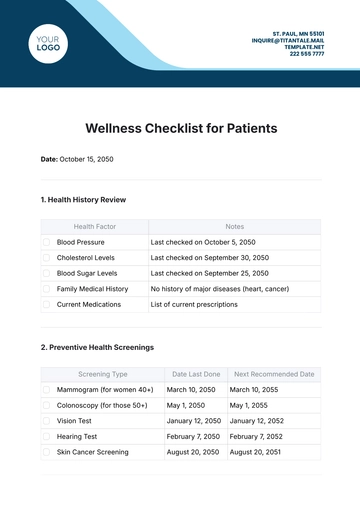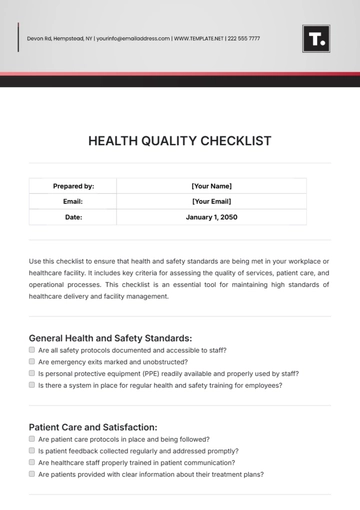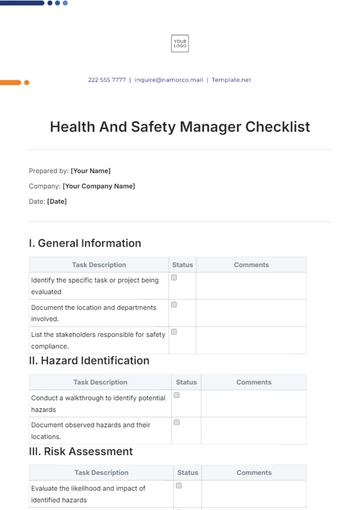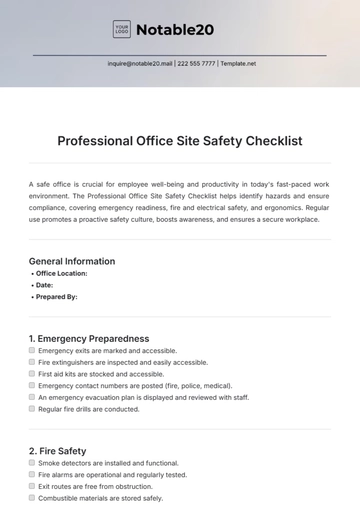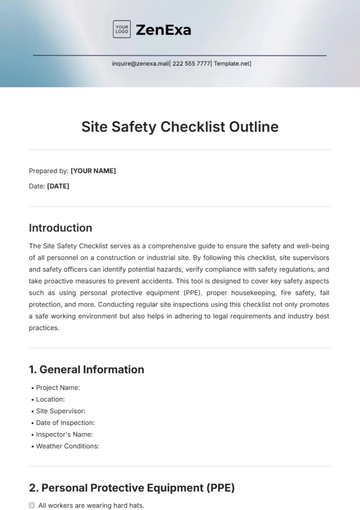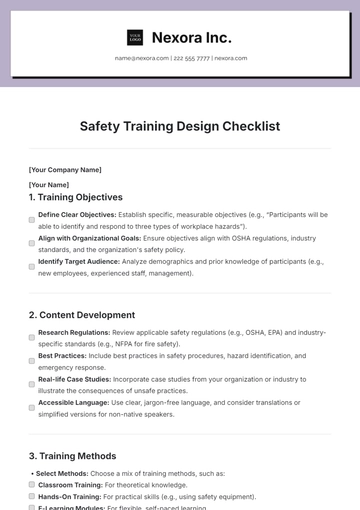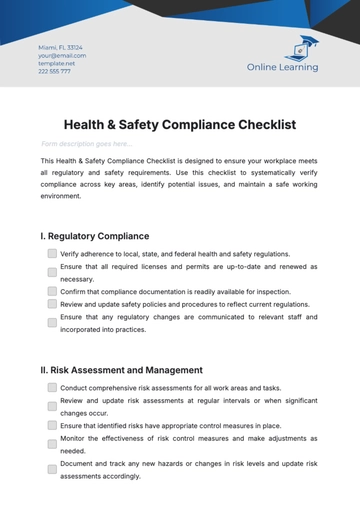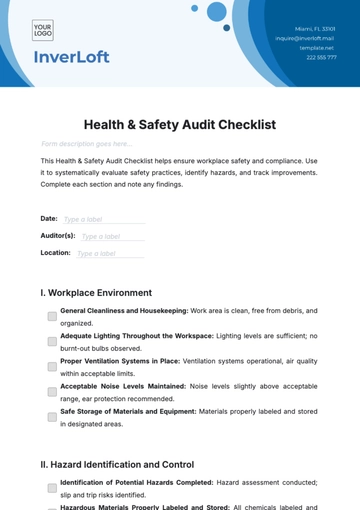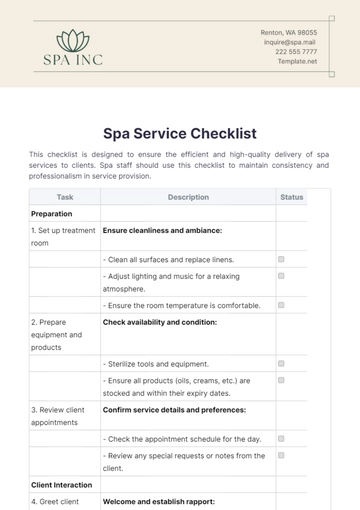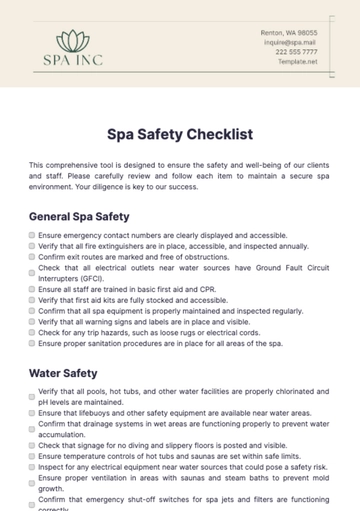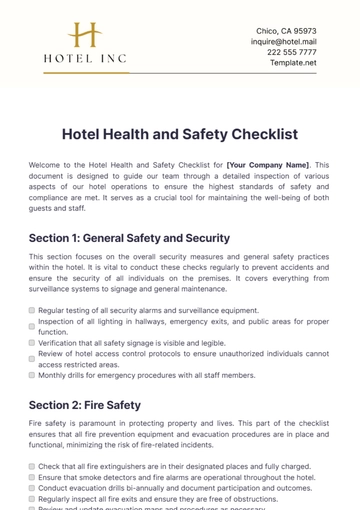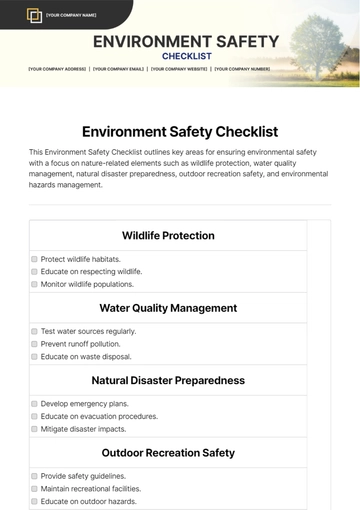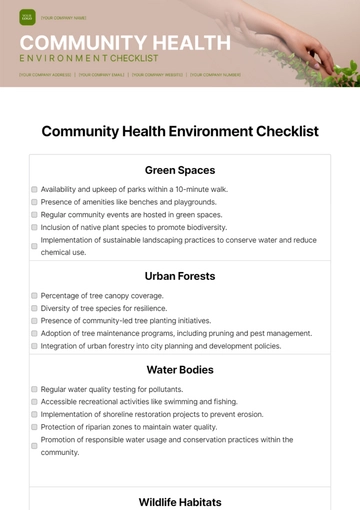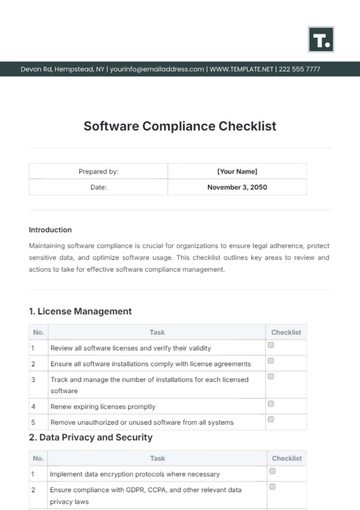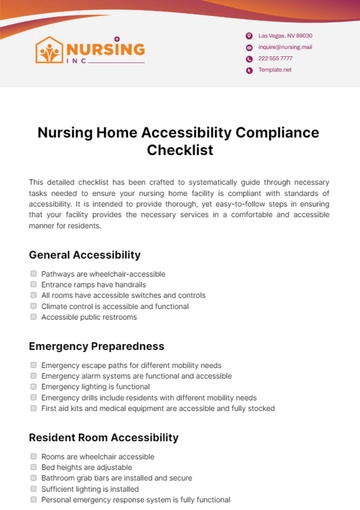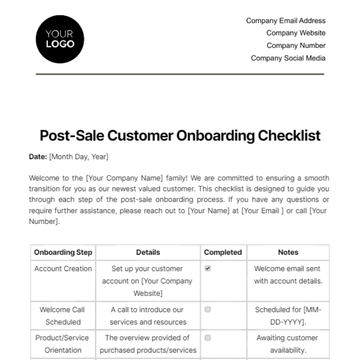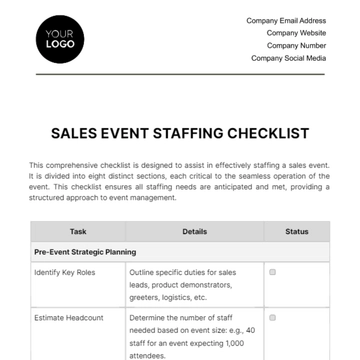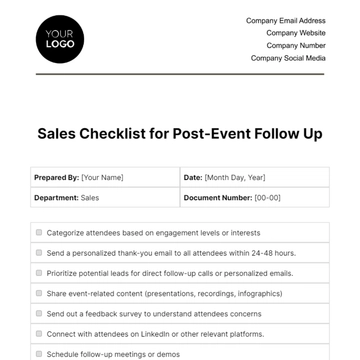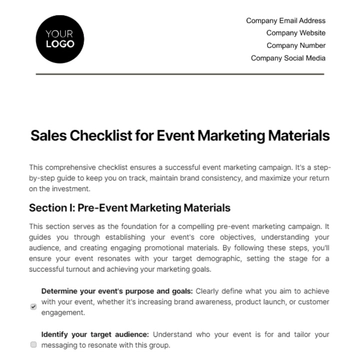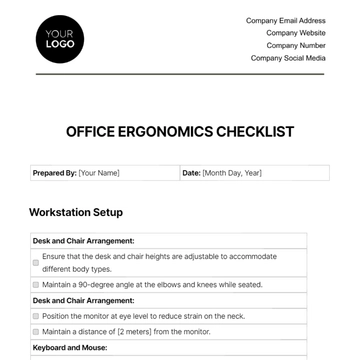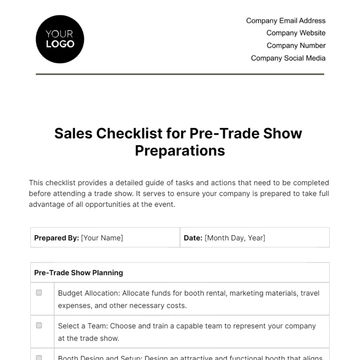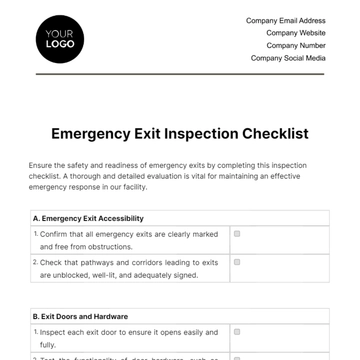Free Personal Protective Equipment Checklist
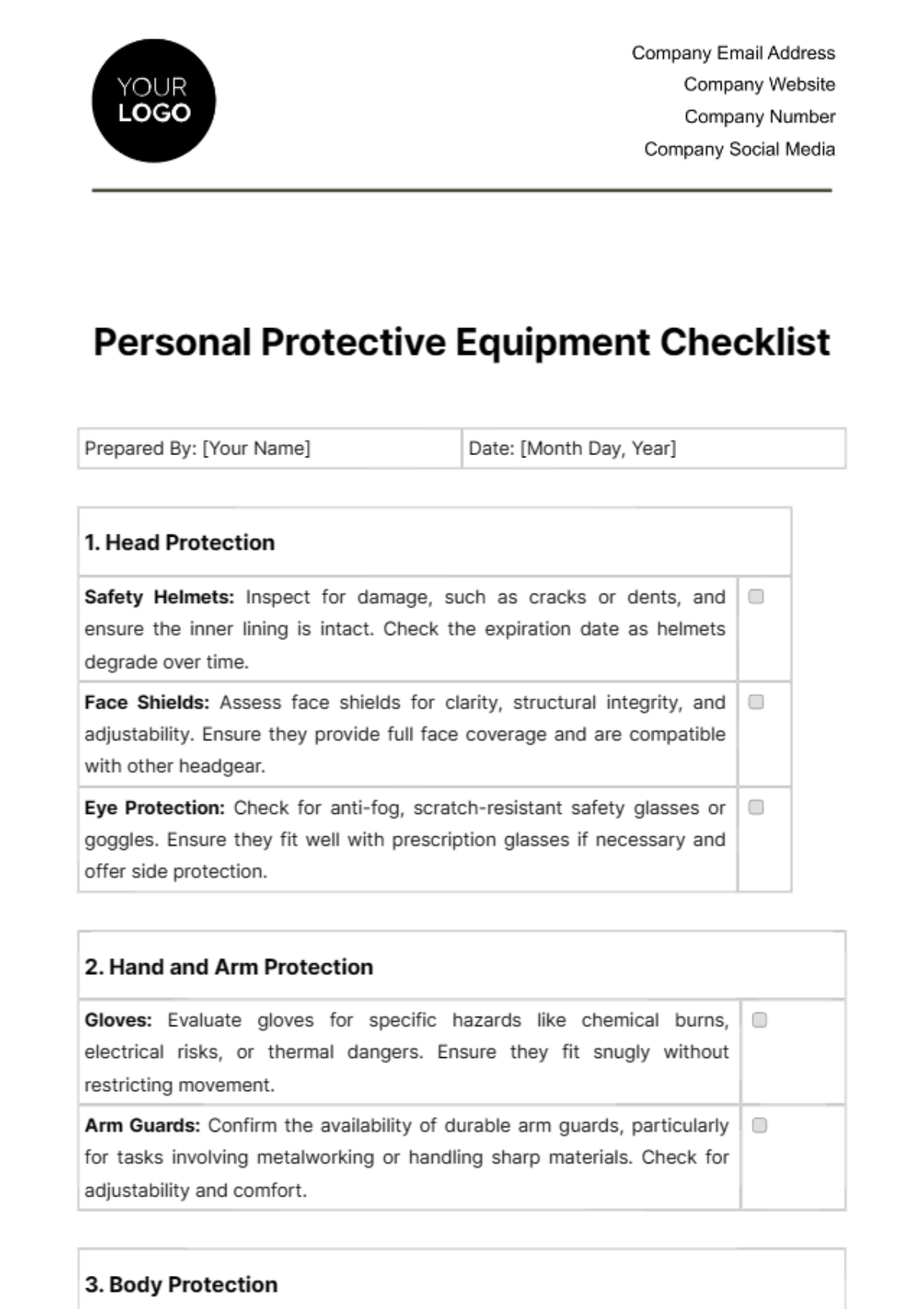
Prepared By: [Your Name] | Date: [Month Day, Year] |
1. Head Protection | |
Safety Helmets: Inspect for damage, such as cracks or dents, and ensure the inner lining is intact. Check the expiration date as helmets degrade over time. | |
Face Shields: Assess face shields for clarity, structural integrity, and adjustability. Ensure they provide full face coverage and are compatible with other headgear. | |
Eye Protection: Check for anti-fog, scratch-resistant safety glasses or goggles. Ensure they fit well with prescription glasses if necessary and offer side protection. | |
2. Hand and Arm Protection | |
Gloves: Evaluate gloves for specific hazards like chemical burns, electrical risks, or thermal dangers. Ensure they fit snugly without restricting movement. | |
Arm Guards: Confirm the availability of durable arm guards, particularly for tasks involving metalworking or handling sharp materials. Check for adjustability and comfort. | |
3. Body Protection | |
High-Visibility Vests: Ensure vests meet visibility standards for the specific work environment, especially for night work or low-light conditions. | |
Protective Clothing: Evaluate clothing for material suitability – flame-resistant for welding, non-reactive for chemical handling, and water-resistant for outdoor work. | |
Aprons: Inspect aprons for appropriate material based on the hazard (rubber for chemicals, leather for welding) and ensure they cover the necessary body parts fully. | |
4. Foot and Leg Protection | |
Safety Shoes/Boots: Ensure they have non-slip soles, and puncture-resistant material, and provide adequate ankle support. Check for signs of sole wear or upper material damage. | |
Leg Guards: Check for ease of movement and protection level. Ensure they do not hinder mobility and provide ample protection against impacts and cuts. | |
5. Respiratory Protection | |
Masks and Respirators: Assess if they are suitable for the type of airborne hazard (dust, chemicals, vapors). Check the seal and fit, especially for half or full-face respirators. | |
Fit and Condition: Regularly test the fit, especially after changes in facial hair or weight. Check the condition of valves, straps, and seals. Ensure cartridges are specific to the hazards and replaced regularly. | |
- 100% Customizable, free editor
- Access 1 Million+ Templates, photo’s & graphics
- Download or share as a template
- Click and replace photos, graphics, text, backgrounds
- Resize, crop, AI write & more
- Access advanced editor
Introducing Template.net's Personal Protective Equipment Checklist Template, an essential resource for ensuring workplace safety compliance. Fully customizable and editable with our Ai Editor Tool, this template empowers businesses to tailor PPE checklists to their specific needs. Streamline safety protocols and mitigate risks effortlessly with our user-friendly platform. Simplify PPE inspections and enhance workplace safety with this comprehensive checklist solution.
You may also like
- Cleaning Checklist
- Daily Checklist
- Travel Checklist
- Self Care Checklist
- Risk Assessment Checklist
- Onboarding Checklist
- Quality Checklist
- Compliance Checklist
- Audit Checklist
- Registry Checklist
- HR Checklist
- Restaurant Checklist
- Checklist Layout
- Creative Checklist
- Sales Checklist
- Construction Checklist
- Task Checklist
- Professional Checklist
- Hotel Checklist
- Employee Checklist
- Moving Checklist
- Marketing Checklist
- Accounting Checklist
- Camping Checklist
- Packing Checklist
- Real Estate Checklist
- Cleaning Checklist Service
- New Employee Checklist
- Food Checklist
- Home Inspection Checklist
- Advertising Checklist
- Event Checklist
- SEO Checklist
- Assessment Checklist
- Inspection Checklist
- Baby Registry Checklist
- Induction Checklist
- Employee Training Checklist
- Medical Checklist
- Safety Checklist
- Site Checklist
- Job Checklist
- Service Checklist
- Nanny Checklist
- Building Checklist
- Work Checklist
- Office Checklist
- Training Checklist
- Website Checklist
- IT and Software Checklist
- Performance Checklist
- Project Checklist
- Startup Checklist
- Education Checklist
- Home Checklist
- School Checklist
- Maintenance Checklist
- Planning Checklist
- Manager Checklist
- Wedding Checklist
- Vehicle Checklist
- Travel Agency Checklist
- Vehicle Inspection Checklist
- Interior Design Checklist
- Backpacking Checklist
- Business Checklist
- Legal Checklist
- Nursing Home Checklist
- Weekly Checklist
- Recruitment Checklist
- Salon Checklist
- Baby Checklist
- Equipment Checklist
- Trade Show Checklist
- Party Checklist
- Hospital Bag Checklist
- Evaluation Checklist
- Agency Checklist
- First Apartment Checklist
- Hiring Checklist
- Opening Checklist
- Small Business Checklist
- Rental Checklist
- College Dorm Checklist
- New Puppy Checklist
- University Checklist
- Building Maintenance Checklist
- Work From Home Checklist
- Student Checklist
- Application Checklist
